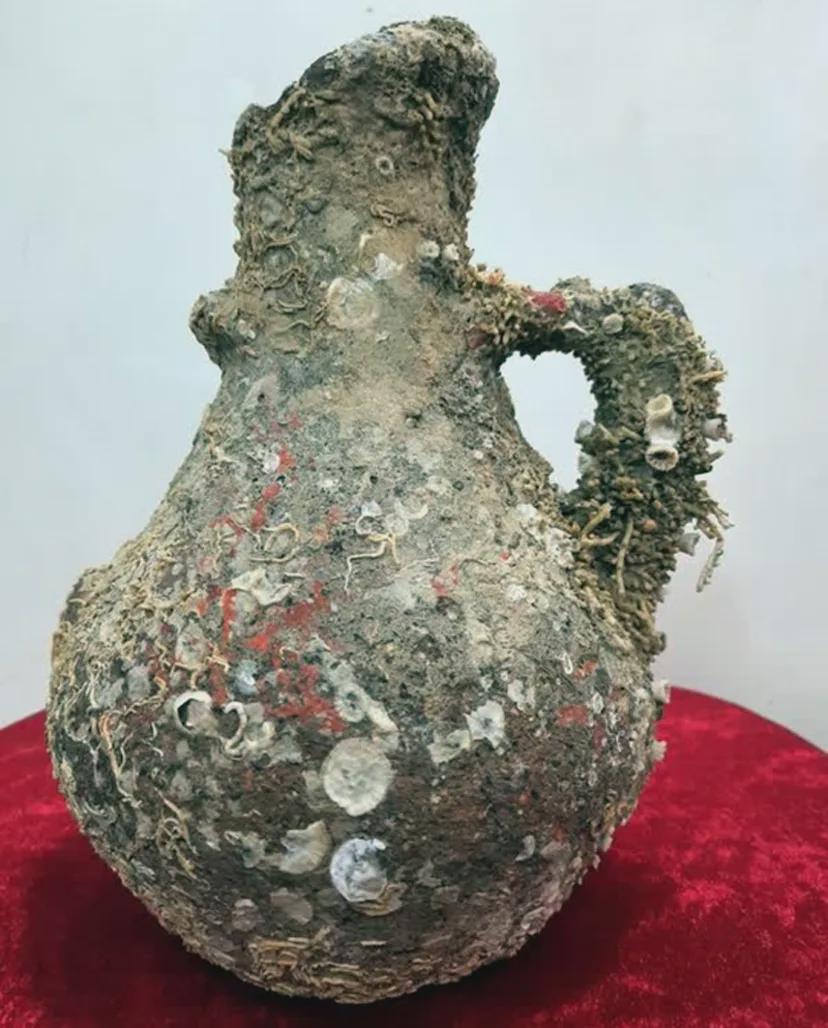
A historical jar from the Parthian Empire, dating to 247 BC–224 AD, has been discovered. It was accidentally caught in the nets of local fishermen in southern Iran while they were fishing in the depths of the Persian Gulf. Few Parthian jars have survived, making this discovery remarkable. [1028×828]
by Party_Judgment5780

2 Comments
The discovery was reported by Farshid Gashti, a cultural heritage, tourism, and environmental activist from Hendijan (the coastal city where the jar was discovered). He handed over the artifact to the Iranian Cultural Heritage Organization. According to experts, this discovery could open a new horizon in understanding the ancient history of Iran’s southern ports.
Gashti stated: “Hendijan, with its millennia-long history stretching from the Parthian to the Sassanid and Islamic periods, is among the ancient and strategic ports along the Persian Gulf. The presence of multiple archaeological sites and remains of ancient cities such as Hendijan itself, Ask, and Mehruban reflects this region’s central role in maritime trade and cultural exchange in antiquity. The discovery of this jar from the seabed opens a new perspective for reinterpreting the maritime history and economic life of this historic port.”
Gashti explained that the jar was found accidentally by local fishermen, who retrieved it from the seabed with their nets while fishing in the Persian Gulf. The artifact originally had two clay handles, one of which is now missing. Preliminary assessments suggest that, based on its technical and visual characteristics, the jar closely resembles Parthian pottery.
Elaborating on the significance of the find, Gashti said: “Since ancient times, the waters of Hendijan have been a route and anchorage point for trading vessels and sailors. It is therefore possible that this jar belonged to a sunken ship or to ancient merchants and fishermen whose belongings fell into the sea. The natural sediments covering its surface are clear evidence of the passage of time and its long stay underwater.”
He concluded: “Given its form, size, and body structure, the jar appears to have been used for storing or transporting liquids during sea voyages. It may itself have been a trade item, representing part of the economic exchanges along the maritime routes of the Persian Gulf. Discoveries like this greatly encourage further underwater archaeological exploration.”
[https://www.chtn.ir/news/1404081100689/%DA%A9%D9%88%D8%B2%D9%87-%D8%AA%D8%A7%D8%B1%DB%8C%D8%AE%DB%8C-%D8%A7%D8%B2-%D8%A7%D8%B9%D9%85%D8%A7%D9%82-%D8%AE%D9%84%DB%8C%D8%AC-%D9%81%D8%A7%D8%B1%D8%B3-%D8%AF%D8%B1-%D9%87%D9%86%D8%AF%DB%8C%D8%AC%D8%A7%D9%86-%DA%A9%D8%B4%D9%81-%D8%B4%D8%AF-%D8%B3%D9%86%D8%AF%DB%8C-%D8%AA%D8%A7%D8%B2%D9%87-%D8%A7%D8%B2](https://www.chtn.ir/news/1404081100689/%DA%A9%D9%88%D8%B2%D9%87-%D8%AA%D8%A7%D8%B1%DB%8C%D8%AE%DB%8C-%D8%A7%D8%B2-%D8%A7%D8%B9%D9%85%D8%A7%D9%82-%D8%AE%D9%84%DB%8C%D8%AC-%D9%81%D8%A7%D8%B1%D8%B3-%D8%AF%D8%B1-%D9%87%D9%86%D8%AF%DB%8C%D8%AC%D8%A7%D9%86-%DA%A9%D8%B4%D9%81-%D8%B4%D8%AF-%D8%B3%D9%86%D8%AF%DB%8C-%D8%AA%D8%A7%D8%B2%D9%87-%D8%A7%D8%B2)
The before shot of a dandruff ad.